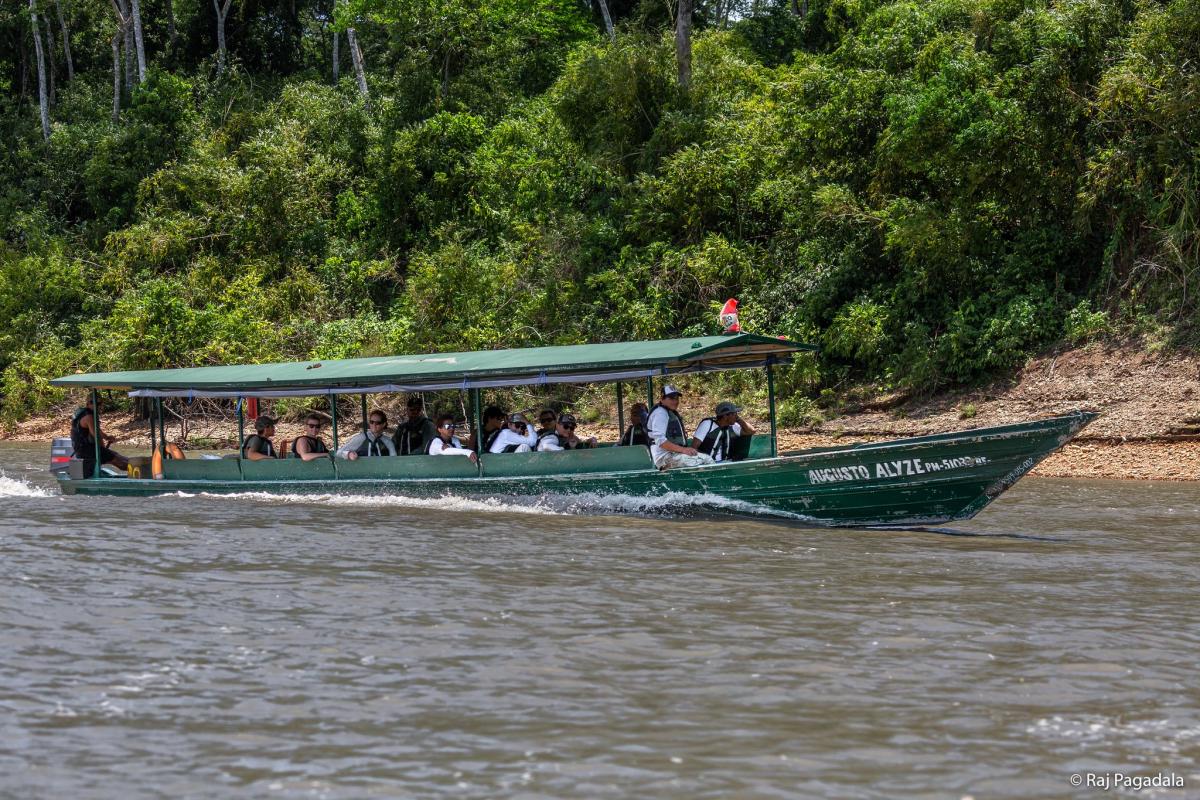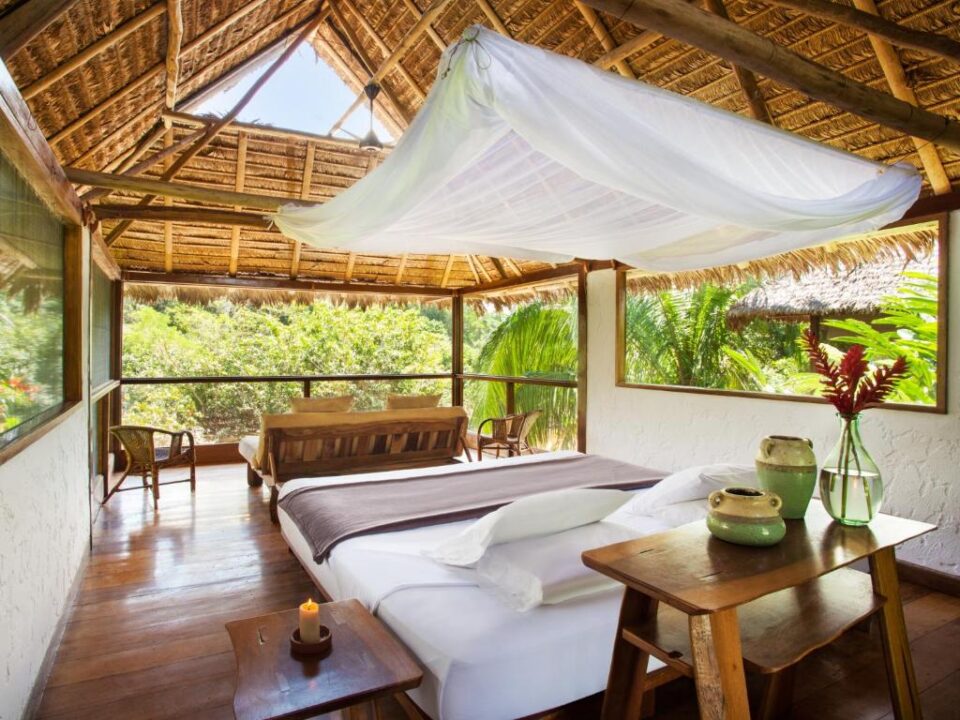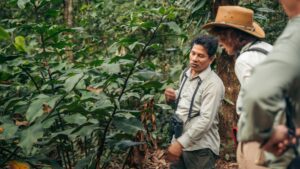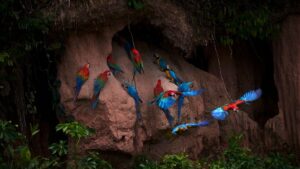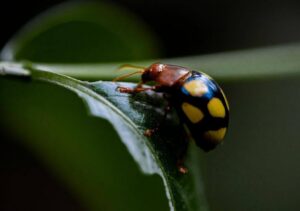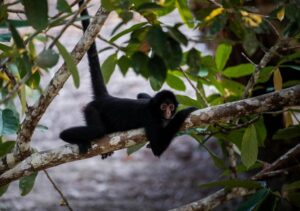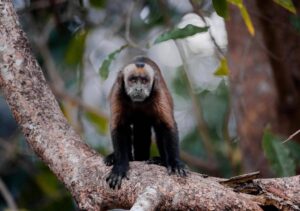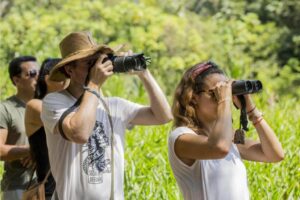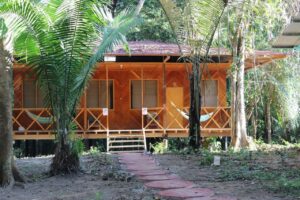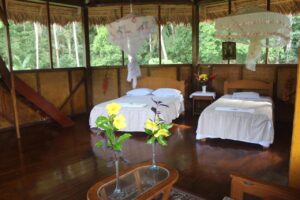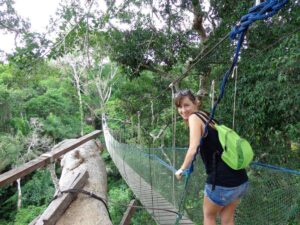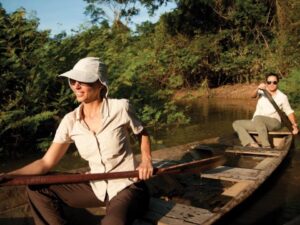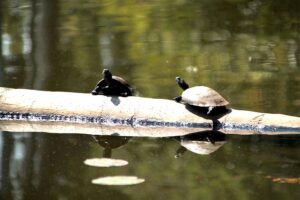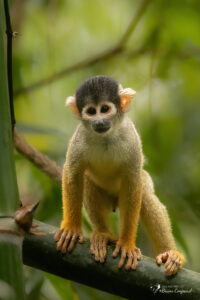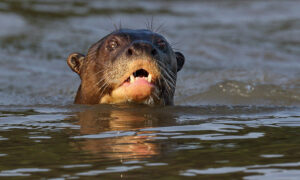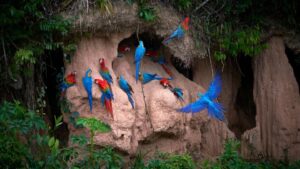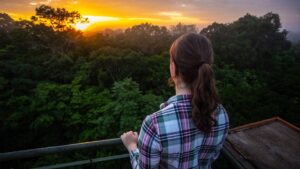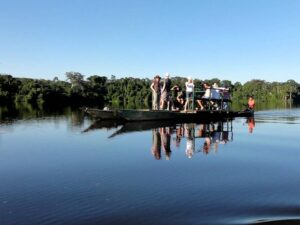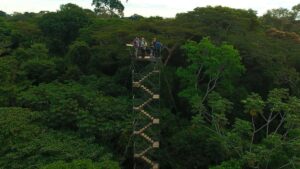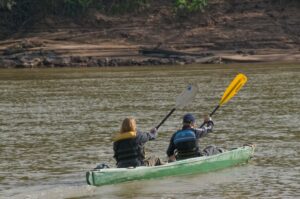Skip 20% "TRIP ADVISOR Skip commission Fee We have daily Availability
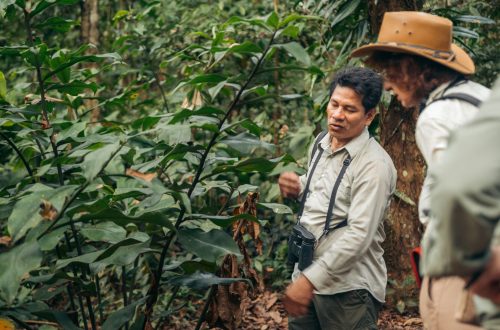
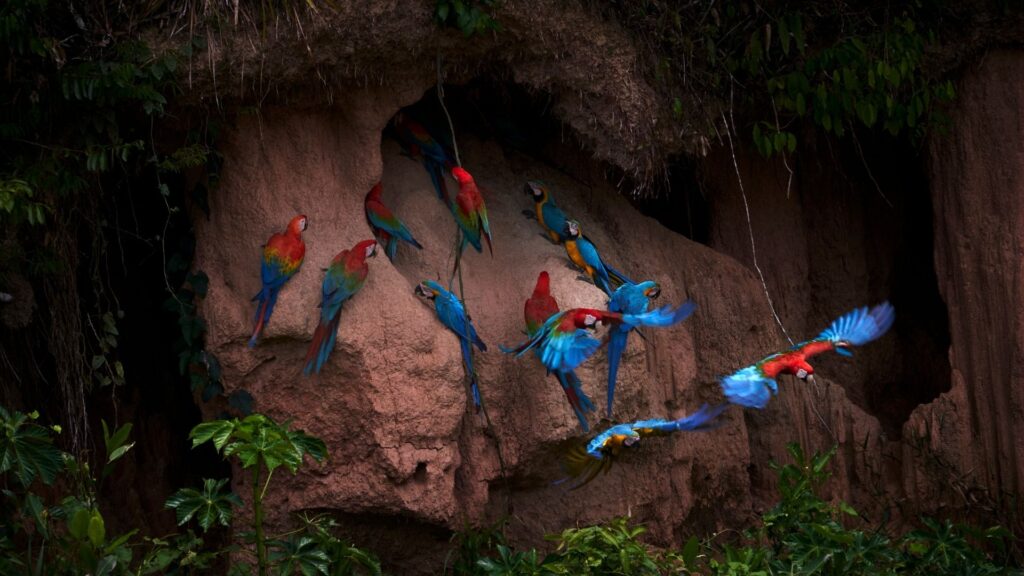
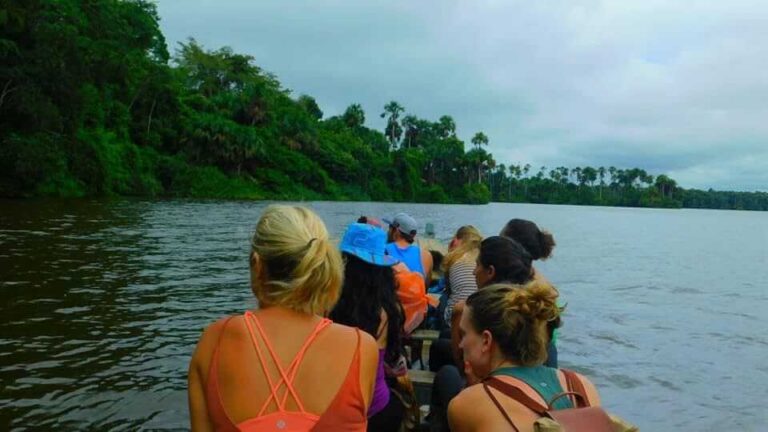
5dMacaw-Lk
Macaw Clay - Stay deep Natural Reserve Sandoval 5 Days
$510
/ per person
Book Now
-
Phisical Demand:Medium
-
Tour Code:5dMacaw-Lk
-
Duration:5D
-
Ages:2+
-
Languages:English, Español
-
Start In:Pto. Maldonado airport/bus station/hotel
-
Ends In:Pto. Maldonado airport / bus station or hotel
-
Group Size:20 Pax

Trip Advisor or Viator Price = $620
With Local tour operator $510
Tour Activities:
Tour Attractions:
This tour in 2023:
Meals:
Where you’ll be
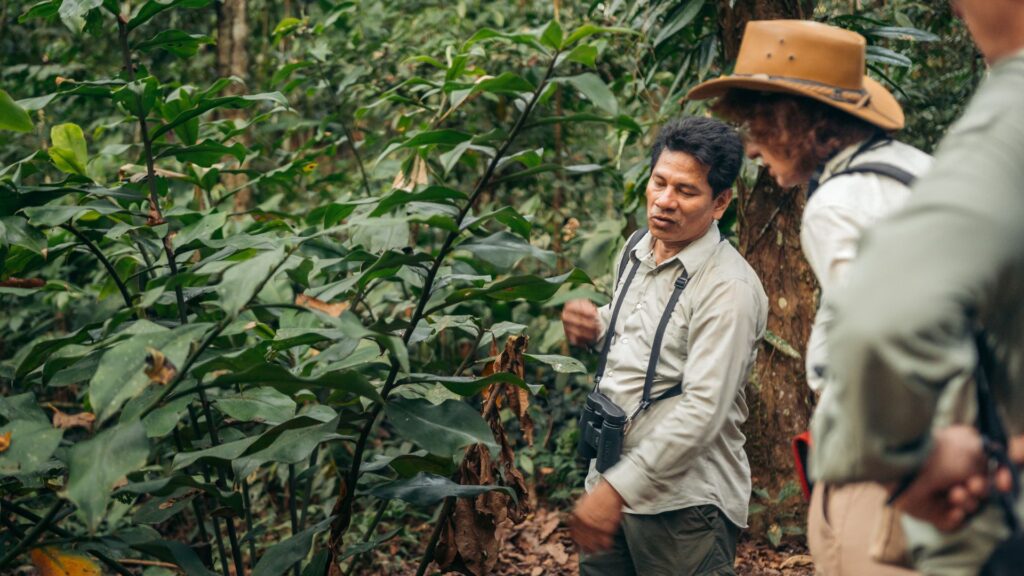
Day 1.- Arrival at the airport or bus station and transfer to our office for the arrangements and information related to the tour before leaving the city of Puerto Maldonado. In case you have large luggage, we suggest that you repack and bring what is required in the Amazon rainforest. Then, transfer in a 4X4 vehicle for approximately 2 hours to reach the Tambopata River.In this part of the trip, we took a motorboat to the lodge. After settling in the ecolodge we will have lunch followed by a walk through the jungle to see and learn. We will have the opportunity to see animals in their natural habitat such as, for example, amphibians, mammals, reptiles and wonderful insects. On dinner, we will have a short briefing about next day activity

Day 2.- We get up early in the morning, at 4:30 am, to take a boat trip to the “collpa” (Quechua word meaning clay with minerals) of the most popular macaws of the Amazon called Chuncho. We will make a trip of 1 hour and a half by motorboat, during the trip we will have the opportunity to see some animals such as, for example, capybaras, tapirs and it is even possible to see the largest cat in South America, the jaguar.Many travelers are witnesses and bring photographic evidence of encounters with many of these wild animals.After arriving at the macaw clay lick, we will first observe the arrival of large groups of parrots and parrots of different species, which arrive before the macaws to eat the mud located next to the clay wall on the river bank.We will find a camouflaged place as close as possible to better see the clay lick from our chairs to await the start of one of the most beautiful bird watching views on the planet.In a day of normal activity in the macaw clay lick, you will notice a great selection of these wonderful animals flying over you becoming an unforgettable experience.Back to our ecolodge, we will have breakfast and rest after an exhausting activity. Then we will walk through the botanical garden where you can see some fruits, timber trees, and medicinal plants.After lunch we will prepare for transport back to Puerto Maldonado, exactly the same route, we will return to the Puerto Maldonado office to go to a second ecolodge located around the accommodation on the island of the monkeys.After accommodating in, we go before dinner to look for alligators (Alligators 3 species of them) in a motorboat in the darkness of the night along the Madre de Dios river.
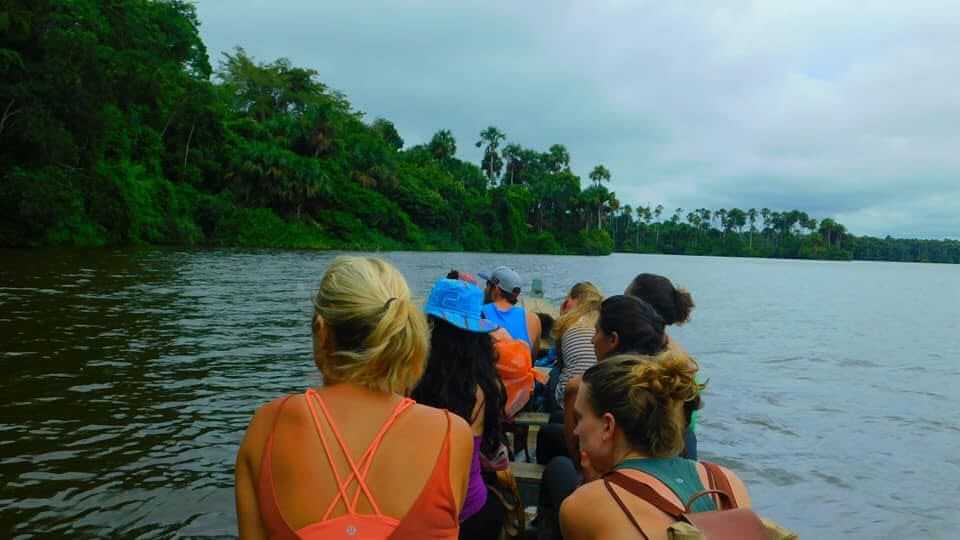
Day 3.- Before breakfast early, we will make a short boat trip to the entrance of Lake Sandoval, then we will check in at the control point, taking a 3-kilometer (2-mile) walk to Lake Sandoval. After a pleasant interpretive walk in the nature reserve, the wildlife guides (Hoatzin, puma heron, eagles, howler monkeys, black capuchins and black alligators).In our Canoe ride, it is possible to observe in the giant otter family of the river (which is in danger of extinction) and in the largest caiman, with more than 4 meters long, return to the ecolodge to enjoy a typical lunch.After lunch, there are some hours to rest or use the pool, before nightfall we will do a night walk around the ecolodge to see nocturnal creatures.With the security of the case and using flashlights to find diversity of insects and with some luck some snakes, then we will return to the ecolodge for our dinner and rest.
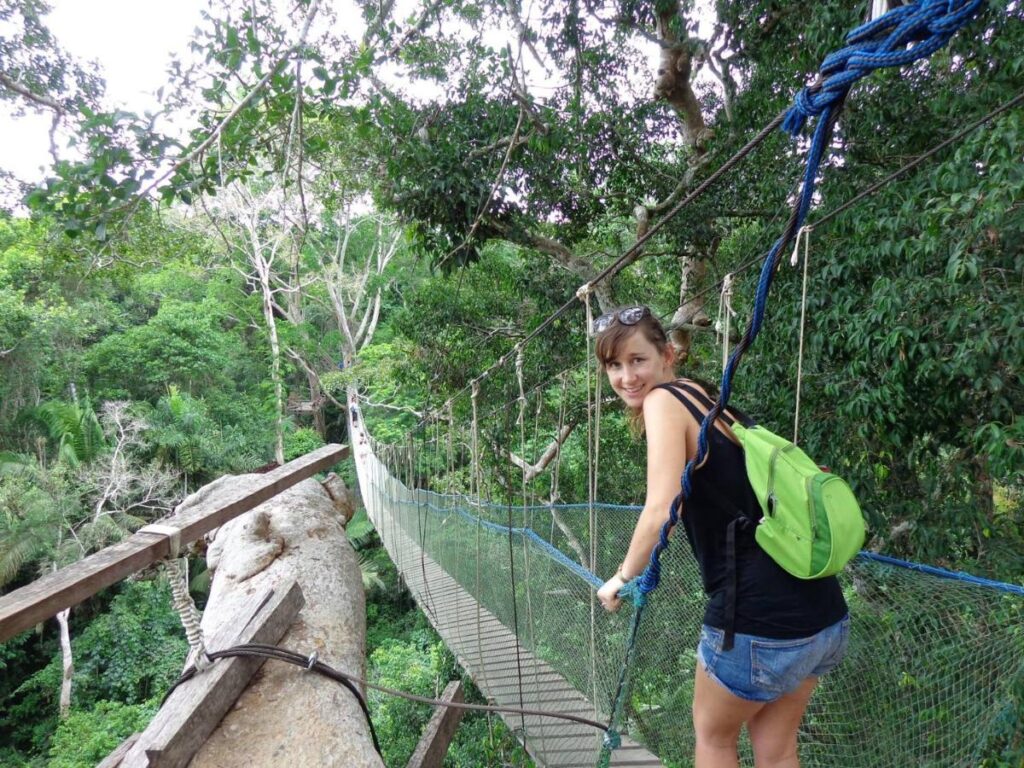
Day 4.- After reakfast adventure circuit is reached by climbing a system of towers and stairs that ascend to the tops of the trees and a platform 30 meters above the surface of the forest. You will feel the air flow in your face as you cross the suspension bridge, which leads to a platform wrapped around the huge trunk of a tree, one of the thickest and strongest trees found in the rainforest.Orchids and other aerial plants that grow between tall branches are usually seen closely as the nests of many birds.We return by the bridge of the canopy and climb to the high platform that marks the beginning of the zipline cable, almost 200 m long, that we fly through the air flow like eagles towards a platform.The views are exceptional only harmonized by the enjoyment of overcoming our fears and the adrenaline that flows through us.The footbridge of 200 m long, which hangs on the ground, leaves this system; an act of balance takes us to the platform at the beginning of the second Zip line, flies back to the tower that goes down to the forest floor.After lunch, we go to the river to practice kayaking, well protected with high quality life vests, and followed by a motorboat that guarantees greater security; This activity is quiet and accessible to everyone.Going down the river, or against the flow of the river, we can easily see the countless birds that inhabit this areaBefore dinner, we will make a night walk through the lodge to appreciate the diversity of insects, amphibians, reptiles and other nocturnal animals. then night in the jungle lodge
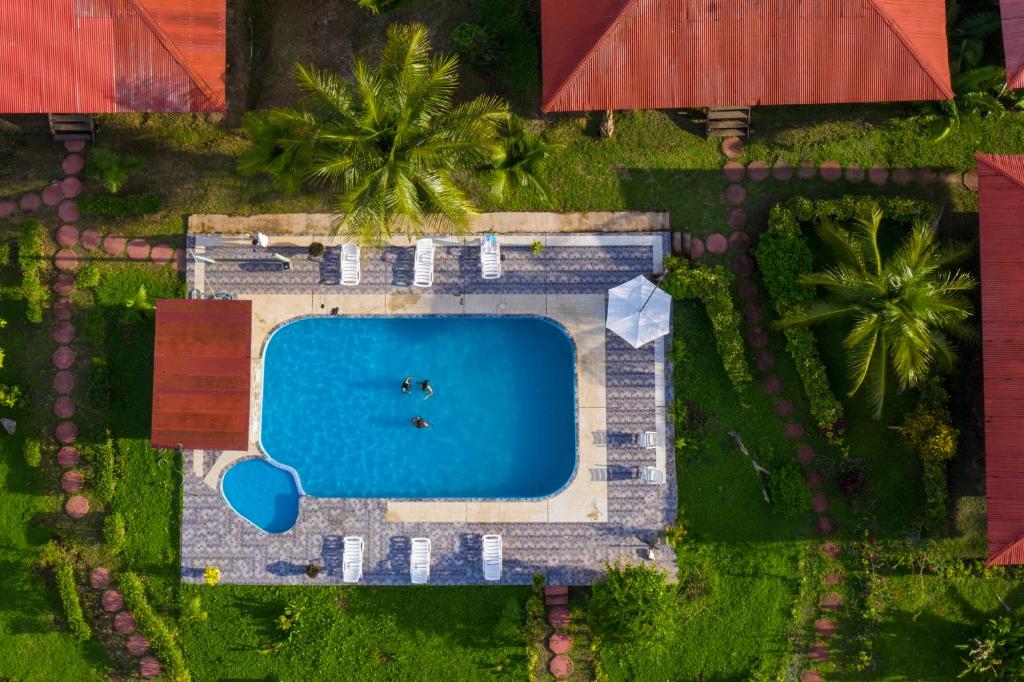
Day 5.- Last chance to see the amazon rainforest in the morning before breakfast you could go for pictures of the river or for a short walk around the ecolodge where many animas go looking for food on the garden. After breakfast, return to the city of Puerto Maldonado, ready for transfer to the airport or hotel.
Tour Price
Following Optional Jungle Hotels are available
Terms & Rules
- Timing
- Pick Up / Tour start
- Drop off / Tour end
- Cancel / Prepayment
- No Age Limit
There are no age restrictions for arrival
- Pets
Pets are NOT allowed.
- Cards accepted
We accept all major credit cards including Visa, MasterCard, American Express (AMEX).
We accept also Bank transfer to our account number and PayPal for credit card processing.
Included:
This is an “All inclusive tour from pick up till drop off”
Pick up from (Airport, bus station or hotel)
04 Nights accommodation in bungalow with private bathroom
1 Professional bilingual guide in the jungle
1 Motor boat transportation for all trips
Breakfast (4) Dinner (4) Lunch (4)
All activities listed in the itinerary
Purified Water 24 hours (To recharge your canteen)
Wellingtons (Rubber boots)
No additional payment for single room or (Solo traveler)
Storage room for large luggage
First aid kit
Drop off to (Airport or bus station)
Not Included:
Drinks bought at the bar
Gratuities
Domestic Flights or Bus from/to Cusco, Lima
Entrance fees (Macw clay + Sandoval lake $24 USD)
Extra snacks and drinks
Travel insurance
Health coverage
Extra snacks and drinks
Notice:
Birdwatching
$434
/ per person
- Monkey Island, Macaw Clay Lick, Lake Sandoval
$840
/ per person
- Lake Sandoval, small parakeets Place, Canopy Walkway
$164
/ per person
- Monkey Island, Lake Sandoval, Native Family
$279
/ per person
- Macaw Clay Lick
$387
/ per person
- Macaw Clay Lick, Sandoval lake
$249
/ per person
- Monkey Island, Lake Sandoval
$359
/ per person
- Observatory Tower, Macaw Clay Lick, Tambopata River
$232
/ per person
- Monkey Island, Lake Sandoval, Madre de Dios river
$214
/ per person
- Monkey Island, Lake Sandoval
$214
/ per person
- Macaw Clay Lick
$577
/ per person
- Lake Sandoval
$114
/ per person
- Monkey Island, Lake Sandoval
$121
/ per person
- Lake Sandoval, Monkey Island
$284
/ per person
- Macaw Clay Lick
$1199
/ per person
- Tambopata River, Macaw Clay Lick
$1040
/ per person
- Monkey Island, Parakeet Clay Lick, Lake Sandoval
$510
/ per person
- Monkey Island, Macaw Clay Lick, Lake Sandoval
$640
/ per person
- Monkey Island, Macaw Clay Lick, Lake Sandoval
Recommendations:
Traveler pickup is offered
Padre Aldamiz International Airport (Puerto Maldonado)
Confirmation will be received within 48 hours of booking, subject to availability
Not wheelchair accessible
Note: departure to the airport on day 3 will take place right after breakfast. Please plan your departure flight accordingly
It is recommended you bring light pants, long sleeved shirts, hiking shoes, rain jacket, day pack, flashlight, binoculars, pocket knife and insect repellent
Minimum age is 5 years old
Maximum luggage per person is 30 pounds (15 kg) Passport name, number, expiry and country is required at time of booking for all participants
Please advise any specific dietary requirements at time of booking
Note: to conserve energy, the power is turned off for a short amount of time in the afternoon. Due to this, it is possible the lodge will be hot during this time.
Not recommended for travelers with back problems
Not recommended for pregnant travelers
No heart problems or other serious medical conditions
Most travelers can participate
This tour/activity will have a maximum of 9 travelers
Cancellation Policy:
If you cancel at least 90 day(s) in advance of the scheduled departure, there is no cancellation fee.
If you cancel within 40 day(s) of the scheduled departure, there is a 100 percent cancellation fee. If you cancel between 40 and 90 day(s) in advance of the scheduled departure, there is a 50 percent cancellation fee. Learn more about cancellations. (All tickets are non refundable)
Frecuently Asked Questions:
The answers provided below are based on answers previously given to customers’ questions.
What is the policy on face masks and attendee health during this tour?
The policies on face masks and attendee health are: Face masks required for travelers in public areas Face masks required for guides in public areas Face masks provided for travelers Temperature checks for travelers upon arrival
What is the policy on sanitization during this tour?
The policies on sanitization are:
Hand sanitizer available to travelers and staff Regularly sanitized high-traffic areas Gear/equipment sanitized between use
Transportation vehicles regularly sanitized
What is the social distancing policy during this tour?
The policies on social distancing are:
Social distancing enforced throughout experience
Contactless payments for gratuities and add-ons
What measures are being taken to ensure staff health & safety during this tour?
The policies on staff health & safety are:
Guides required to regularly wash hands Regular temperature checks for staff
Paid stay-at-home policy for staff with symptoms
What is the maximum group size during this tour?
This activity will have a maximum of 10 travelers.

